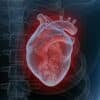Unlocking the Connection Between Spine and Mind: A Holistic Path to Wellness
Many people are surprised to learn just how closely linked spinal health is to mental well-being. Yet, understanding and nurturing this relationship can be a powerful step toward achieving lasting, whole-body wellness. Far beyond just easing aches and pains, chiropractic care and other integrative therapies offer a roadmap to better balance—physically, mentally, and emotionally.
At the heart of this connection is the spine. It’s more than just a structural support; it plays a central role in movement, posture, and nervous system function. When properly aligned, the spine helps the body move with ease and efficiency. But its benefits go even deeper—improving spinal health can also lead to greater mental clarity, reduced stress, and a stronger sense of internal harmony.
Chiropractic care focuses on aligning the spine to support nervous system performance and reduce physical strain. Clinics like Sevenoaks Chiropractic specialize in identifying and correcting misalignments that can affect everything from mobility to mood. By incorporating regular adjustments into your wellness routine, you may notice improved posture, pain relief, and even enhanced emotional resilience.
What makes chiropractic treatment particularly powerful is its emphasis on prevention. Instead of waiting for discomfort to become chronic, regular care helps maintain alignment, reduces your risk of future injuries, and supports the body’s natural ability to heal. Whether you’re active, sedentary, or somewhere in between, this proactive approach sets the foundation for long-term vitality.
Complementing chiropractic care, massage therapy offers its own therapeutic benefits. Not only does it relieve muscle tension and promote deep relaxation, but it also enhances circulation, supports joint mobility, and helps the body recover after stress or strain. When used consistently, massage can lead to improved sleep quality, reduced anxiety, and a healthier immune system—thanks in part to its effect on lowering cortisol levels.
For an even deeper look at your physical well-being, biomechanics assessments provide valuable insights. By analyzing how your body moves during daily tasks or exercise, a professional can spot inefficient or harmful patterns that may lead to injury. Understanding your movement habits allows you to make small, impactful changes—improving posture, efficiency, and physical performance.
This kind of awareness is helpful for everyone, from athletes looking to gain a competitive edge to office workers hoping to avoid back pain. Learning how to move more intelligently protects your body and keeps you functioning at your best.
Another powerful tool in the wellness toolkit is Neurodevelopmental Therapy. Though often used in clinical settings to assist those with neurological challenges or developmental delays, this approach can benefit anyone recovering from injury or seeking to improve coordination and motor function. By retraining the nervous system through guided movement and hands-on techniques, it helps restore better communication between the brain and body—leading to more controlled, confident movement.
When these therapies—chiropractic, massage, biomechanics evaluation, and neurodevelopmental work—are used in harmony, the results can be transformative. Each plays a distinct role in restoring balance, supporting recovery, and preventing future setbacks.
By looking at health through a holistic lens, you empower yourself to feel better, move better, and live more fully. Creating a wellness plan that touches on all these areas is not just about relieving discomfort—it’s about thriving in both body and mind.
















